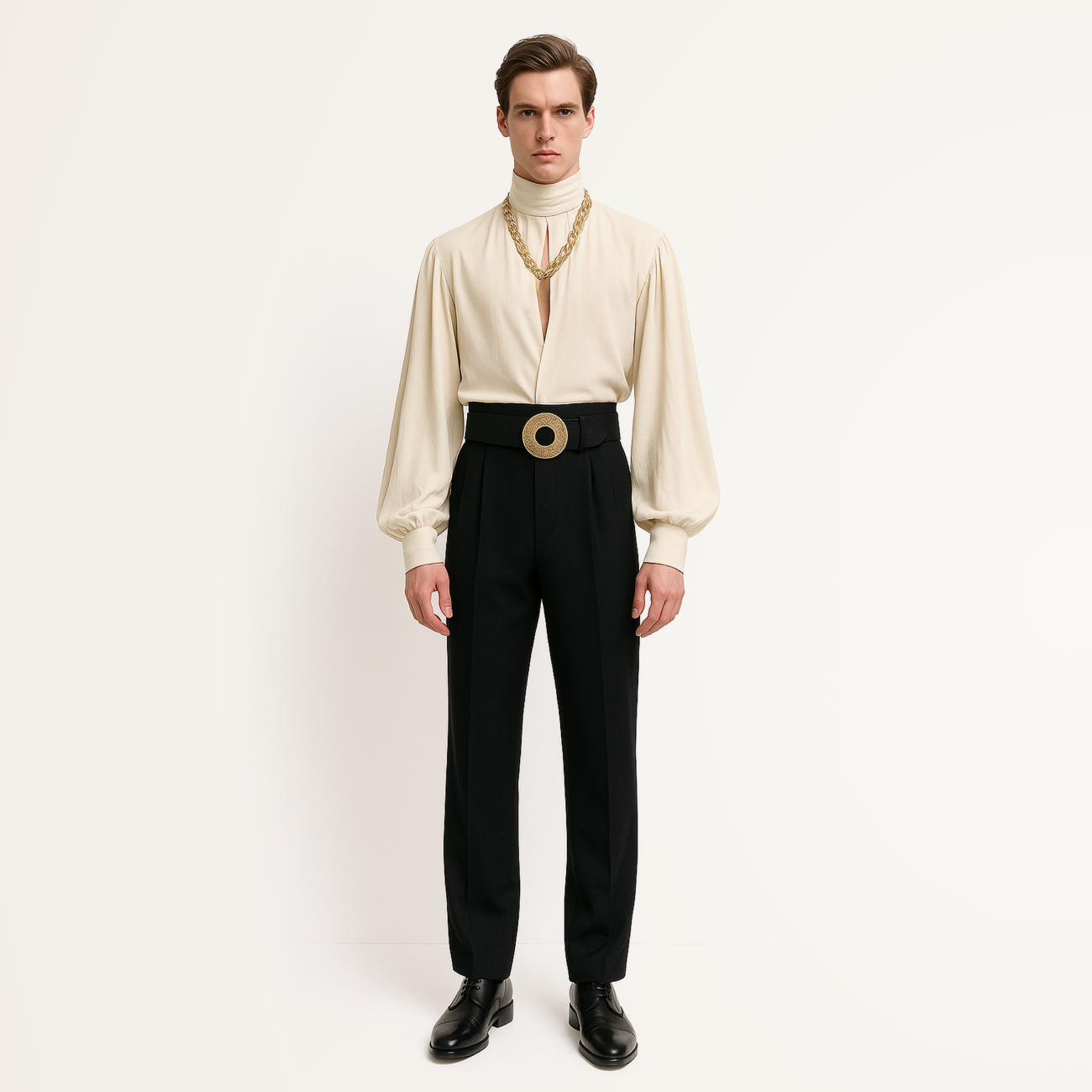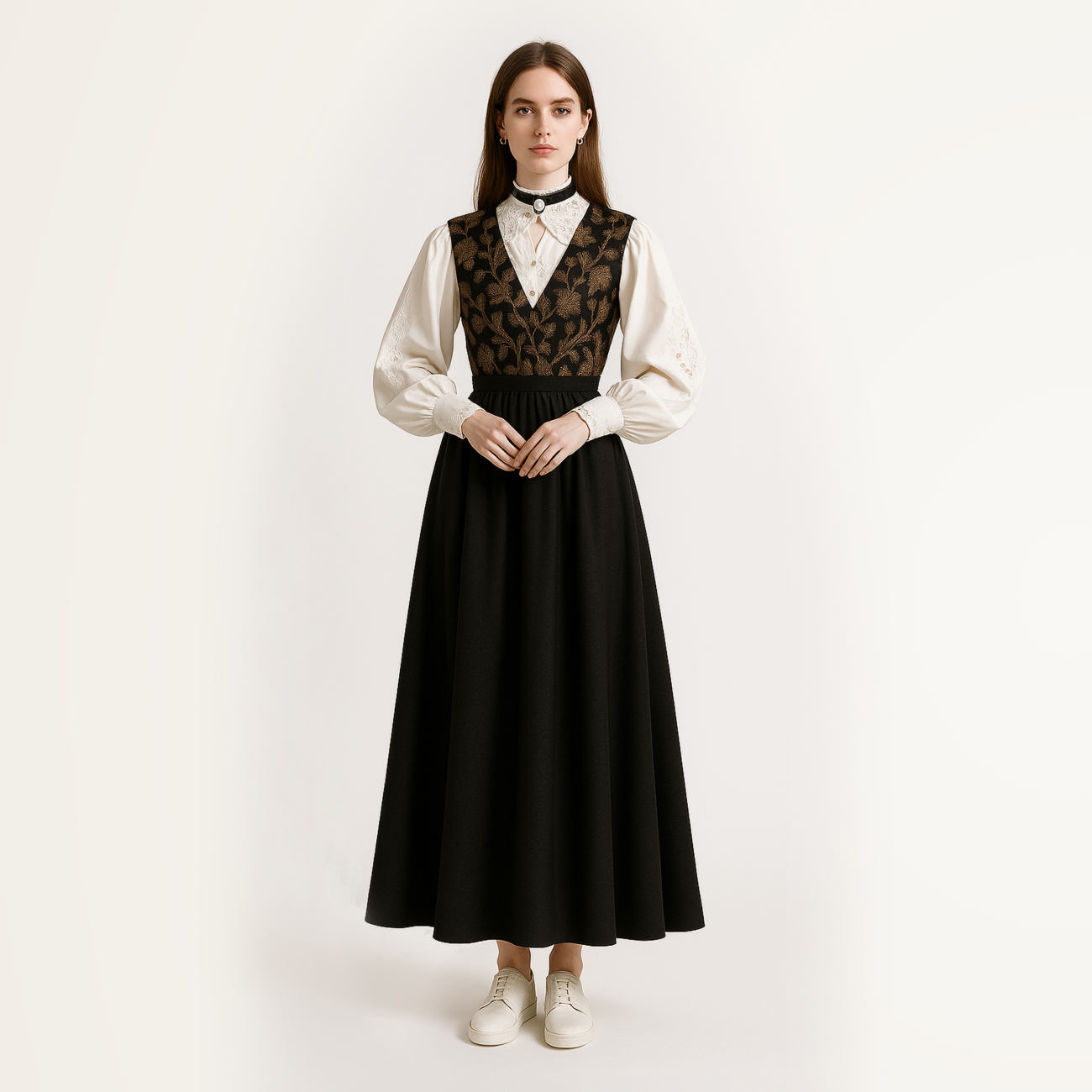Victorian
Victorian style pays homage to an era of restrained luxury, refined elegance, and intricate detailing—an age when every garment reflected meticulous craftsmanship and grace. This style is built on a delicate interplay of contrasts: formality and femininity, sensuality and modesty, opulence and restraint.
History
The history of Victorian style is closely tied to the reign of Queen Victoria of England, which began in 1837 and ended with her death in 1901. This long era was marked by significant social and cultural shifts that helped shape a distinctive fashion aesthetic. Victorian fashion reflected not only the queen’s personal tastes but also new ideals of femininity, modesty, and status. The style became a symbol of elegance, luxury, and propriety, aligned with the era’s moral and social expectations.
In the early Victorian period (1830s–1850s), fashion was still strongly influenced by Romanticism. Clothing during this time carried an air of lightness, romantic fantasy, and refined sentimentality—puffed sleeves, delicate fabrics, and floral patterns were popular, expressing a dreamlike softness.
By the mid-Victorian era (1850s–1870s), the rise of industrialization dramatically transformed both clothing production and people’s relationship with fashion. Textiles became more accessible thanks to mass production, and ready-to-wear garments began to diversify. Fashion was no longer reserved solely for the elite—it began to reach the growing middle class, who saw clothing as a reflection of respectability and social standing.
The late Victorian period (1870s–1900s) was marked by more structured and formal silhouettes in women’s fashion. As society evolved, so did the silhouettes, which became sharper and more tailored—yet still retained the era’s trademark opulence. Corsets, bustles, and long trains defined the elegance and grace of a woman, while rich fabrics and intricate detailing underscored wealth and refinement.
Victorian style has left a lasting imprint on fashion and culture, continuing to inspire modern designers and stylists. Its influence can be seen in today’s gothic fashion, boho-chic, and the Victorian revival aesthetic, as well as in historical re-enactments, vintage-inspired clothing, and popular period dramas. The Victorian era remains a powerful symbol of craftsmanship, romance, and timeless sophistication.
Signature elements of the style
Color palette
Victorian style is defined by a palette of deep, muted tones such as burgundy, dark green, navy blue, black, and gray. White, beige, and soft pastels were typically reserved for undergarments and layering pieces. With the invention of aniline dyes, brighter shades like purples, teals, and vivid pinks also made their way into fashion, adding drama and richness.
Prints
Prints in Victorian fashion often featured small, delicate floral patterns, evoking a romantic and refined mood. Heraldic motifs and tartan were also popular, especially in outerwear and formal attire.
Textures
This style relied heavily on luxurious and tactile fabrics: velvet, wool, silk, lace, and taffeta were staples. Lace and ruffles added a soft, feminine charm, while velvet emphasized the elegance and wealth of the wearer.
Cuts & silhouette
Victorian silhouettes were structured and refined. Dresses often featured a high waistline, emphasized by a corset, with a focus on the shoulders and a gradual widening toward the hem to create a graceful, flowing shape.
Wardrobe essentials
- Dresses: Long and intricately designed, often with a fitted waist and voluminous skirt. Dresses featured elaborate draping, corsetry, and multiple layers, emphasizing grandeur and femininity.
- Corsets: A cornerstone of Victorian style, corsets shaped the body into the iconic silhouette of the era, highlighting the waist and supporting structured garments.
- Jackets and coats: Tailored and elegant, often with shoulder detailing, velvet panels, and ornate trims, adding sophistication and formality to outerwear.
- High-neck blouses with lace: A key romantic element, these blouses evoked modesty and grace, often adorned with ruffles, lace, and fine buttons.
- Hats and gloves: Essential accessories of the Victorian wardrobe. Hats were often richly decorated with feathers, flowers, and veils, while gloves added a final touch of polish and propriety.
- Crinolines and bustles (tournures): These understructures were worn beneath skirts to create volume and shape, defining the era’s characteristic silhouette with dramatic fullness in the hips and back.
Substyles
- Gothic Victorian: This variation focuses on the darker side of Victorian fashion, embracing elements of mystery, drama, and elegance. Dominated by black fabrics, lace, velvet, and high collars, it often incorporates corsets, floor-length skirts, and ornate accessories, creating a moody and ethereal aesthetic steeped in Victorian-era romanticism.
- Romantic Victorian: Soft and delicate, this substyle highlights femininity and grace through the use of pastel tones, lightweight fabrics, and an abundance of ruffles and lace. It evokes a sense of nostalgia and dreamy charm, often featuring flowing silhouettes, high-necked blouses, and intricate details that reflect the gentler side of the era.
Email: support@belt-app.com


















